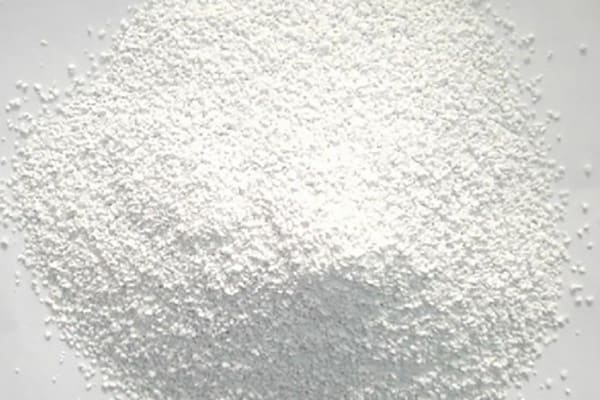Calcium phosphate and calcium hydrogen phosphate are two important compounds in the world of chemistry and nutrition, often discussed in contexts ranging from dietary supplements to industrial applications. Though they may sound similar, these compounds have distinct properties, uses, and forms. Understanding their differences can provide clarity on their specific roles and benefits. Here’s an in-depth look at these two compounds and how they differ.
Calcium Phosphate: A Comprehensive Overview
Calcium phosphate refers to a family of related compounds that contain calcium and phosphate ions. The most common forms of calcium phosphate include:
- Tricalcium Phosphate (TCP): With the formula Ca₃(PO₄)₂, tricalcium phosphate is one of the most prevalent forms. It is found in bone and teeth and is often used as a dietary supplement to support bone health.
- Dicalcium Phosphate (DCP): Represented by the formula CaHPO₄, this compound is commonly used as a food additive, in dietary supplements, and in animal feed. It provides both calcium and phosphorus, essential nutrients for bone health.
- Hydroxyapatite: The chemical formula Ca₁₀(PO₄)₆(OH)₂ represents hydroxyapatite, which is the main mineral component of bone and dental enamel. It is often used in medical and dental applications, including implants and toothpaste.
Uses and Benefits:
- Bone Health: Calcium phosphate, particularly in the form of hydroxyapatite, is vital for maintaining healthy bones and teeth. It contributes to the mineralization and strength of these tissues.
- Dietary Supplements: Tricalcium phosphate and dicalcium phosphate are often included in dietary supplements to ensure adequate calcium intake, supporting bone density and overall health.
- Food Industry: Calcium phosphate is used as a leavening agent and an anti-caking agent in various food products, enhancing texture and quality.
Calcium Hydrogen Phosphate: Key Characteristics
Calcium hydrogen phosphate, with the chemical formula CaHPO₄, is a specific type of calcium phosphate. It is known for its unique properties compared to other forms of calcium phosphate.
Types:
- Calcium Hydrogen Phosphate Dihydrate (CaHPO₄·2H₂O): This hydrated form is often used in dental products and fertilizers. It contains two water molecules per formula unit.
- Calcium Hydrogen Phosphate Anhydrous (CaHPO₄): This form lacks water and is often used in pharmaceuticals and as a food additive.
Uses and Benefits:
- Dental Care: Calcium hydrogen phosphate is commonly found in toothpaste, where it acts as a mild abrasive that helps remove plaque and polish teeth.
- Animal Feed: It is used in animal feed as a supplement to provide essential calcium and phosphorus.
- Pharmaceuticals: In the pharmaceutical industry, it is used as an excipient in tablets and capsules, helping to bind and stabilize active ingredients.
Key Differences
-
Chemical Composition:
- Calcium Phosphate: Generally refers to a family of compounds including tricalcium phosphate, dicalcium phosphate, and hydroxyapatite, each with varying proportions of calcium and phosphate.
- Calcium Hydrogen Phosphate: Specifically refers to CaHPO₄ and its dihydrate form. It contains one hydrogen ion per formula unit in addition to calcium and phosphate.
-
Forms and Hydration:
- Calcium Phosphate: Can be found in multiple forms, including hydrated (such as hydroxyapatite) and anhydrous forms. The presence or absence of water can affect its physical properties and applications.
- Calcium Hydrogen Phosphate: Exists in both hydrated (dihydrate) and anhydrous forms, but its primary distinction is the presence of a hydrogen ion, which affects its solubility and reactivity.
-
Applications:
- Calcium Phosphate: Used broadly in dietary supplements, food additives, and medical applications. Its various forms serve different functions based on their specific properties.
- Calcium Hydrogen Phosphate: Primarily used in dental care, animal feed, and pharmaceuticals. Its specific use is often determined by its chemical structure and properties.
-
Physical Properties:
- Calcium Phosphate: Varies in solubility and reactivity depending on the specific compound. For example, tricalcium phosphate is less soluble in water compared to dicalcium phosphate.
- Calcium Hydrogen Phosphate: Typically has distinct solubility characteristics due to the presence of hydrogen, affecting its use in different applications.
Conclusion
While both calcium phosphate and calcium hydrogen phosphate are essential compounds with significant applications in health, nutrition, and industry, they serve different roles based on their chemical composition and properties. Calcium phosphate, in its various forms, is crucial for bone health and as a food and pharmaceutical additive. Calcium hydrogen phosphate, with its specific chemical structure, finds unique applications in dental care and animal nutrition. Understanding these differences helps in selecting the appropriate compound for specific uses, ensuring optimal effectiveness and safety in their respective applications.
Post time: Aug-15-2024











